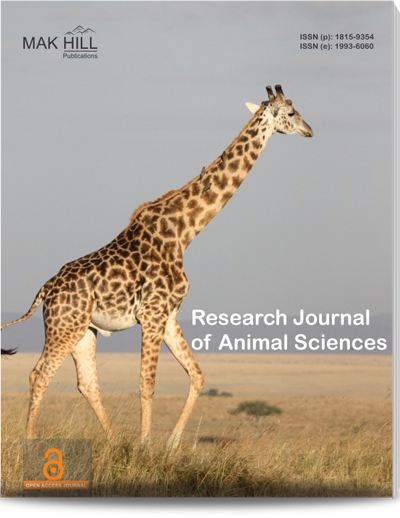
Research Journal of Animal Sciences
ISSN: Online 1994-4640ISSN: Print 1993-5269
Abstract
A study was conducted to determine the effect of breed group, age, period of birth, season of shearing and sex on staple length. Wool samples were collected from Bannur (n = 68) and UAS-improved strain (n = 120) maintained at UAS Campus, Bangalore. Wool samples (n = 608) were also collected from Bannur (n = 69), Rambouillet x Deccani (n = 56), Corriedale x Bannur (n = 76), Corriedale x Deccani (n = 122) and Deccani (n = 97) before shearing at the left side region at Large Scale Sheep Breeding and Training Centre, Kudapura, Chellakere of Chiradurga district of Karnataka. The Least Squares Analysis of Variance technique was adapted to detect the significant sources of non-genetic variation. The overall least square mean of staple length was 3.97±0.05 cm. The comparison of means among genetic groups revealed that the longest staple length was recorded in Corriedale x Deccani (4.87±0.03 cm) followed by Deccani (4.72±0.20 cm), UAS-improved strain (4.14±0.04 cm), Rambouillet x Deccani (3.77±0.10 cm), Bannur (3.17±0.06 cm) and Corriedale x Bannur (2.87±0.06 cm). Significant differences in staple length were noticed with respect to breed, age, period of birth, season of shearing and sex.
How to cite this article:
R. Thiagarajan and M.R. Jayashankar. Effect of Genetic and Non-Genetic Factors on Staple Length in Indigenous and Crossbred Sheep.
DOI: https://doi.org/10.36478/rjnasci.2012.1.3
URL: https://www.makhillpublications.co/view-article/1993-5269/rjnasci.2012.1.3